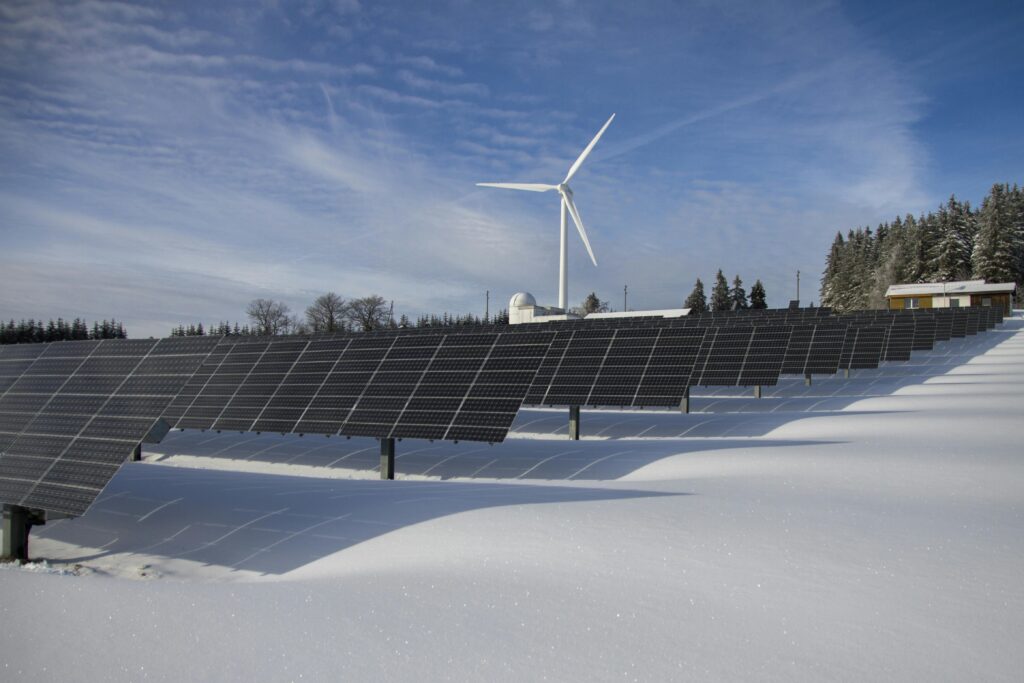
The transition to clean energy faces major bottlenecks. It includes inadequate financing mechanisms and challenging power procurement processes. As a result, it limits the wider adoption of methods like renewable energy PPAs (Power Purchase Agreements). Furthermore, innovative financing structures and evolved PPA contract terms are critical. It unlocks the next wave of rapid corporate renewable energy deployment needed to meet sustainability targets. So, in this article, we will go deeper into it.
Streamlined Financing – The Catalyst for Enabling Renewable Energy PPAs
Limited access to low-cost capital has traditionally hampered the viability and bankability of renewable energy projects. It applies to both developed and emerging economies. Moreover, companies were forced to rely on balance sheet financing to enable direct investments in renewable energy projects. However, evolving financing innovations are disrupting the status quo:
Increased Efficiency of Financial Vehicles
Yieldcos, green bonds, and sustainability-linked loans are driving down the cost of capital for renewable energy PPAs. Yieldcos are publicly listed financial vehicles that aggregate renewable energy assets from one or more projects. Furthermore, they allow developers to crystallize value and harness cheaper public equity markets for raising capital.
The rapidly expanding green bond market topped $1 trillion in 2022. So, it offers cheap debt financing specifically for renewable energy and environmental projects. Additionally, sustainability-linked loan instruments tie the interest rates charged to measurable ESG outcomes. It includes greenhouse gas emission reductions from renewable energy PPAs signed by borrowers.
Aggregation and Risk Transfer
Smaller distributed renewable energy projects face greater perceived technology and execution risks. So, aggregating such projects into larger portfolios of solar, wind or hybrid assets with risk mitigation across geographies can improve overall risk perception in renewable energy PPAs. As a result, this unlocks access to cheaper financing costs through improved economies of scale. Moreover, refinancing operational renewable assets to third-party institutional investors helps free up developer capital. This is to fund new projects. So, such secondary market financing transfers key merchant risks away from developers.
Global Capital Availability
Funding renewable projects is no longer a niche segment. It is increasingly becoming mainstream across public and private institutional investors. It includes pension funds, insurance firms, sovereign wealth funds, and more. For instance, Norway’s trillion-dollar oil fund is permitted to invest over 5% into renewable energy assets. So, this is driving far greater global capital availability. It gives the project developers access to the scale of financing required for new renewable capacity additions in renewable energy PPAs.
Blended Finance for Emerging Markets
Combining private equity/debt with cheaper development funds, and guarantees from multi-laterals enables de-risking projects in newer emerging regions. It stimulates renewable energy investments. Additionally, blended finance has already unlocked over $15 billion for developing economy renewable energy markets. This is as per the IFC with wider applicability for regional growth.
Easing Constraints Around Contracts to Support RE Procurement
Contracts have been a consistent pain point for renewable energy PPAs. Renewable energy procurement comes with issues ranging from lack of transparency to restrictions around retail choice. As a result, there is a need to ease constraints around contract durations, pricing terms, etc:
Enabling Retail Choice
Policy measures like retail choice for electricity procurement are critical for markets with regulated utilities. In regulated electricity markets, state policies enabling retail choice allow corporates to bypass traditional utilities and directly contract with independent renewable power producers through bilateral agreements. So, this has been crucial for growth in markets like Texas.
Flexible Contract Durations
The typical renewable energy PPAs duration has been 15-20 years driven by project financing terms. However, increased interest from corporate buyers has led to pressure. This is for more flexible 5-15-year contract duration options better aligned with their evolving business trajectories. As a result, this provides off-takers options to reassess their arrangements based on priorities.
Innovative Pricing Models
Contract pricing has moved from simple fixed $/MWh over lifetimes to mechanisms like pricing tied to inflation rates, wholesale energy market rates, locational marginal prices, gas indexes, and more. So, this evolution provides various shared risk mechanisms between buyers and sellers during periods of commodity/energy price volatility.
Customized Risk Allocation
One-size-fits-all contracts are giving way to bespoke risk allocation. This is across technical, operational, and financial domains. It is based on the unique risk appetites of corporate renewable energy buyers. For example, risk of wind resource variation, grid transmission outage, and taxes on renewable generators can be differently allocated between parties.
‘Carve Out’ and ‘Proxy Revenue’ Clauses
These contract clauses provide businesses the flexibility to attribute contracted renewable energy to specific facilities. Moreover, it contributes towards greening their operations. It also provides an average per unit contracted rate for renewable energy instead of direct physical delivery.
Two-way Price Collars
Price collar structures can limit both buyers’ and sellers’ financial exposure when it comes to financing and contracts in RE PPAs. This is during significant electricity market price swings through the agreed ceiling and floor price limits. It is while allowing participation in upside/downside within bands.
These contractual innovations provide additional options and flexibility for corporate buyers. This is to enable renewable energy procurement through methods like PPAs by balancing risk across parties.
Emerging Procurement Models Expanding Options
Traditional physical renewable energy PPAs involved lengthy negotiations and were viable mainly for heavy energy users with large, creditworthy balance sheets. However, innovative procurement models are emerging that expand options for smaller buyers across sectors related to financing and contracts in RE PPAs. So, let us look at a few of them:
Virtual Power Purchase Agreements (vPPAs)
vPPAs are financial contracts that disaggregate physical renewable energy delivery from the financial settlement of contracted variable generation. Moreover, this model is gaining strong traction enabling access for lighter energy usage buyers. This is from universities, cities, and companies without large energy loads. So, under vPPAs, corporates provide fixed clean energy pricing to developers. This is for renewable generation in exchange for financial reconciliation on short-term energy market sales. Additionally, contract tenures between 7-15 years allow shorter flexibility. The global vPPA market crossed 13.6 GW in 2020 and is expected to cross 22 GW by 2030 enabling broader renewable adoption.
Aggregated PPAs
Aggregated PPAs allow pooling demand across multiple smaller buyers. These are contracted jointly reducing transaction costs for individual off-takers. For example, EV fleet owners with distributed charging sites can aggregate electricity demand. This is to viably procure through a shared PPA. Renewable energy developers also perceive lower risk contracting with a more diversified portfolio of buyers. Furthermore, aggregation helps smaller municipalities, and commercial real estate owners to overcome size thresholds for adoption.
Multi-lateral PPAs
These structures involve intermediaries. It includes retail energy providers aggregating demand from various downstream C&I end-users for contracting with IPPs. So, buying through load-serving entities enables access for smaller firms across sectors. These are the ones interested in meeting renewable energy goals without direct PPA capabilities. Streaming retail procurement also helps aggregators offer evolved RE products for end-users.
These emerging procurement models are vital in expanding access to renewable energy contracting options for smaller energy users beyond high-consuming corporations and unlocking the next phase of decarbonization commitments.
To Sum Up
Access to financing and contracts are pivotal enablers. These will accelerate the adoption of methods like renewable energy PPAs across a broader universe of corporates. It will also unlock the next phase of ambitious sustainability commitments.
Corporates interested in areas like contracting for renewable energy, partnerships with energy providers, socio-economic factors affecting renewable energy PPAs, hydrogen-based PPAs, multi-buyer PPAs, etc. should evaluate attending the upcoming Net Zero Energy Sourcing and Purchasing Agreements summit. It takes place on Feb 29th – March 1st, 2024, in Berlin, Germany. Industry experts at the summit will provide the latest insights around renewable energy PPAs and how innovative financing mechanisms along with flexible power procurement models can be leveraged by sustainability-focused organizations among other things. So, know more about the event and mark your attendance!





